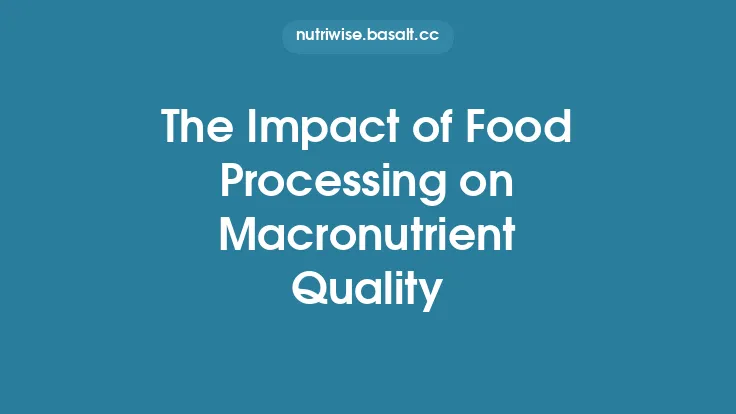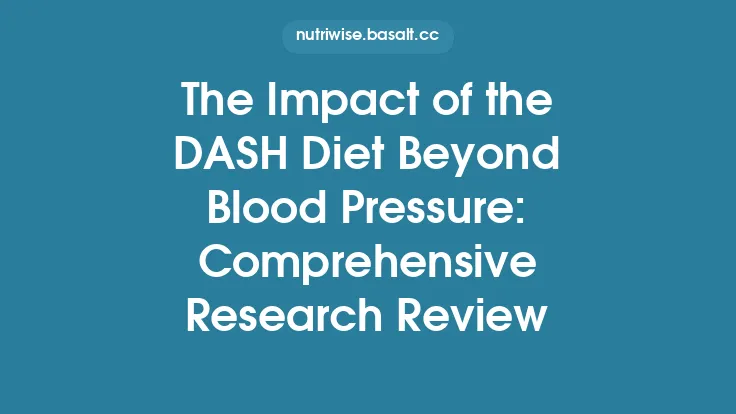Grilling is often celebrated for its smoky flavor, quick cooking time, and the social atmosphere it creates around a fire. Yet, for those who monitor blood glucose closely, the grill can also be a powerful ally. By applying specific techniques, you can transform traditionally high‑glycemic starchy foods—such as potatoes, corn, plantains, and even certain grains—into dishes that provoke a gentler rise in blood sugar. This article explores the science behind the glycemic response and provides a toolbox of grilling methods that preserve or even enhance the resistant‑starch content of starchy foods, while delivering the satisfying char and aroma that make grilled meals so appealing.
Understanding the Glycemic Response to Grilled Starches
1. Glycemic Index (GI) vs. Glycemic Load (GL)
- GI measures how quickly a carbohydrate raises blood glucose compared to pure glucose.
- GL incorporates portion size (GI × carbohydrate grams ÷ 100). A food with a moderate GI can still have a high GL if the serving is large.
2. The Role of Resistant Starch
Resistant starch (RS) behaves like dietary fiber: it resists digestion in the small intestine, ferments in the colon, and blunts post‑meal glucose spikes. There are four main types:
- RS1: Physically inaccessible starch (e.g., whole grains, seeds).
- RS2: Naturally resistant granules (e.g., raw potatoes, green bananas).
- RS3: Retrograded starch formed when cooked starches are cooled.
- RS4: Chemically modified starches (rare in home cooking).
Grilling, when combined with strategic pre‑ and post‑cooking steps, can increase RS2 and RS3 content, thereby lowering the effective GI of the food.
3. Surface Area and Carbohydrate Accessibility
The more surface area exposed to heat, the more gelatinization of starch occurs, which can raise GI. However, a well‑controlled sear that creates a thin crust while keeping the interior dense can limit excessive gelatinization, preserving RS.
Choosing the Right Starchy Foods for the Grill
| Food | Typical GI (raw) | Grill‑Friendly Forms | Notes on RS Potential |
|---|---|---|---|
| Russet potatoes | 111 | Thick wedges, halved tubers | High RS2 when partially cooked, then grilled |
| Sweet potatoes | 63 | Sliced rounds, whole small tubers | RS2 present in raw; grilling adds flavor without huge GI jump |
| Corn on the cob | 52 | Whole ears, husked or un‑husked | Fiber‑rich; grilling caramelizes sugars but retains moderate GI |
| Plantains (green) | 30 | Sliced lengthwise, whole | Very high RS2; grilling adds smoky notes |
| Parboiled rice cakes | 70 (varies) | Formed into patties | Pre‑cooked rice can be cooled → RS3 formation before grilling |
| Quinoa patties | 53 | Formed into burger‑style discs | Though technically a seed, it behaves like a grain; grilling adds texture |
Select varieties that are firm and have a lower initial GI. Green (unripe) plantains and freshly harvested potatoes contain the most RS2, making them ideal starting points.
Pre‑Cooking Strategies to Boost Resistant Starch
- Parboiling Followed by Cooling
- Method: Boil the starchy item for 5–7 minutes (just enough to soften the exterior), then plunge into ice water.
- Why it works: Partial gelatinization followed by rapid cooling initiates retrogradation, converting a portion of the gelatinized starch into RS3.
- Steaming (Brief) Before Grilling
- While steaming is a separate cooking method, a brief steam (2–3 minutes) can soften the surface without fully gelatinizing the interior, setting the stage for a quick grill that creates a crust while preserving RS.
- Microwave “Pre‑Cook”
- For thin slices (e.g., sweet‑potato rounds), a 30‑second microwave burst can start the gelatinization process, after which the food is cooled and then grilled.
- Cold‑Soaking
- After any heat treatment, store the food in the refrigerator for at least 12 hours. The longer the cooling period, the greater the RS3 formation.
Practical tip: Prepare a batch of parboiled potatoes on the weekend, cool them overnight, and grill portions throughout the week for quick, low‑GI side dishes.
Grill Temperature and Direct vs. Indirect Heat
| Technique | Temperature Range | Effect on Starch | Ideal Foods |
|---|---|---|---|
| High‑heat direct grilling | 450–550 °F (232–288 °C) | Rapid surface sear, limited interior gelatinization | Thin wedges, plantain slices, corn |
| Medium‑heat direct grilling | 350–425 °F (177–218 °C) | Balanced crust formation, moderate interior cooking | Sweet‑potato rounds, larger potato halves |
| Indirect grilling (two‑zone) | 300–350 °F (149–177 °C) | Gentle cooking, more uniform gelatinization (useful after pre‑cooking) | Whole potatoes, large corn cobs, rice‑based patties |
Key considerations:
- Avoid prolonged high heat that fully gelatinizes the starch, as this raises GI.
- Use a two‑zone setup (coals on one side, empty space on the other) to finish thicker pieces indirectly, allowing the interior to stay dense while the exterior crisps.
- Monitor internal temperature with a probe; aim for 190–200 °F (88–93 °C) for fully cooked potatoes, then remove promptly to prevent over‑cooking.
Creating a Protective Barrier: Coatings and Fat Integration
- Oil‑Based Coatings
- Lightly brush starchy pieces with a heart‑healthy oil (olive, avocado, or grapeseed). The fat forms a barrier that slows water loss, reduces excessive surface gelatinization, and adds satiety.
- Nut‑Based Pastes
- Spread a thin layer of almond or cashew butter on sweet‑potato slices before grilling. The protein and fat further blunt glucose absorption.
- Spice Rubs (Non‑Acidic)
- Combine ground cumin, smoked paprika, garlic powder, and a pinch of sea salt. Spices do not affect the glycemic response directly but enhance flavor, reducing the need for sugary sauces.
- Fiber‑Rich Dustings
- Lightly dust with ground flaxseed, chia flour, or oat bran. The added soluble fiber creates a micro‑gel on the surface, slowing carbohydrate digestion.
Avoid: Acidic marinades (e.g., lemon juice, vinegar) that belong to a separate article focus. Instead, opt for oil‑based or dry rubs.
Smoke, Char, and Maillard: Balancing Flavor and Glycemic Load
- Maillard Reaction: The browning that occurs above 300 °F (149 °C) creates flavorful compounds without necessarily increasing GI. However, excessive charring can produce acrylamide, a potential health concern. Aim for a golden‑brown crust rather than blackened edges.
- Smoke Infusion: Adding wood chips (apple, cherry, or hickory) imparts aromatic phenols that enhance satiety signals. Smoke does not alter carbohydrate structure, so it is a neutral technique regarding glycemic impact.
- Char Management: Use a grill grate with a fine mesh to prevent food from falling into flare‑ups, which cause uneven charring. Rotate pieces frequently to achieve an even crust.
Practical tip: For corn, grill on the husk for the first 5 minutes to steam, then remove husk and finish directly for a charred flavor without over‑cooking the kernels.
Cooling and Reheating: The Power of Retrogradation
After grilling, allow starchy foods to cool to room temperature, then refrigerate for at least 4 hours (ideally overnight). This cooling period encourages retrogradation, converting more gelatinized starch into RS3.
When reheating:
- Gentle reheating (e.g., low‑heat oven at 300 °F/150 °C) preserves much of the newly formed RS3.
- Avoid microwaving at high power for extended periods, as it can reverse retrogradation.
Example workflow:
- Grill sweet‑potato rounds until lightly charred.
- Cool on a rack for 20 minutes, then transfer to a shallow container and refrigerate overnight.
- Reheat in a preheated oven for 10 minutes before serving.
The reheated product retains a firmer texture and a lower effective GI than the freshly grilled version.
Pairing Grilled Starches with Protein and Healthy Fats
Combining carbohydrates with protein and fat slows gastric emptying, flattening the post‑meal glucose curve. Consider these pairings:
- Grilled potato wedges + grilled chicken breast (marinated in herb‑oil rub).
- Corn on the cob + avocado salsa (diced avocado, cilantro, lime zest—use lime zest only, not juice).
- Plantain slices + black‑bean patty (seasoned with cumin and smoked paprika).
- Quinoa patties + grilled salmon (optional drizzle of walnut oil).
Aim for a plate composition of roughly 50 % non‑starchy vegetables, 25 % protein, 15 % healthy fat, and 10 % grilled starch to keep the overall glycemic load modest.
Practical Tips for Home Grilling
| Tip | How to Implement |
|---|---|
| Pre‑heat the grill | Allow at least 10–15 minutes for charcoal or gas to reach target temperature. |
| Use a grill thermometer | Consistent temperature control is key to avoiding over‑gelatinization. |
| Prep a “cool‑down” station | A wire rack placed near the grill lets food rest while retaining heat. |
| Invest in a grill basket | Ideal for small pieces (e.g., diced sweet‑potato cubes) that might fall through grates. |
| Keep a spray bottle of water | Useful for controlling flare‑ups without dousing the food. |
| Plan for leftovers | Cook extra portions, cool, and store in airtight containers for next‑day reheating. |
| Track portion sizes | Use a kitchen scale; ½ cup cooked starchy food ≈ 15 g carbohydrate. |
| Season after grilling | Salt can draw moisture; adding it post‑grill preserves a crisp crust. |
Conclusion: Sustainable Grilling for Blood Sugar Management
Grilling is more than a quick cooking method; it can be a strategic tool for moderating the glycemic impact of beloved starchy foods. By selecting low‑GI varieties, employing pre‑cooking and cooling techniques that boost resistant starch, managing heat zones, and pairing with protein and healthy fats, you create meals that satisfy the palate while supporting stable blood glucose levels.
These practices are evergreen—they rely on fundamental food science rather than fleeting trends—so they remain applicable whether you own a backyard charcoal grill, a gas patio unit, or a compact indoor electric grill. Incorporate the outlined steps into your regular cooking routine, and you’ll discover that the grill can be both a flavor champion and a guardian of metabolic health.





